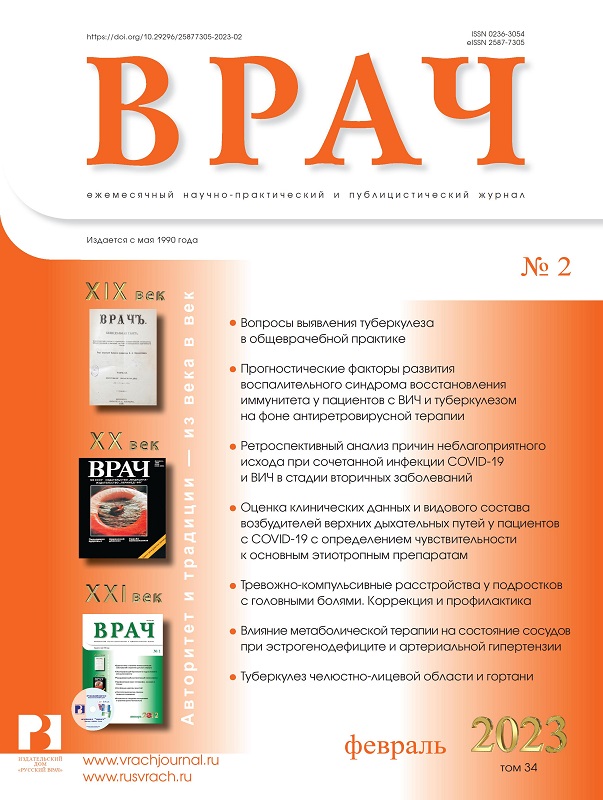Rehabilitation method using virtual reality technology and robotic mechanotherapy in patients with coxarthrisis after hip joint replacement operation
- 作者: Marchenkova L.A.1, Yurova O.V.1, Fesyun A.D.1
-
隶属关系:
- National Medical Research Center for Rehabilitation and Balneology of the Ministry of Health of Russia
- 期: 卷 34, 编号 2 (2023)
- 页面: 57-59
- 栏目: From Practice
- URL: https://journals.eco-vector.com/0236-3054/article/view/397562
- DOI: https://doi.org/10.29296/25877305-2023-02-12
- ID: 397562
如何引用文章
详细
Objective: to evaluate the impact of the rehabilitation with the inclusion of virtual reality technology and robotic mechanotherapy on the speed and biomechanics of walking in patients with coxarthrosis after hip arthroplasty.
Material and methods. The sample consisted of 40 patients aged 40–80 years after hip arthroplasty for coxarthrosis. Within 14 days, patients of the main group (n=20) received a new complex of physical therapy, including robotic mechanotherapy and training on a system with virtual reality technology, in the control group (n=20) – a standard rehabilitation complex.
Results. In the main group, a decrease in the level of pain according to VAS by 41.7% (p=0.023 compared with the baseline; p=0.047 compared with the control group), as well as an increase in walking speed (by 20.5%; p= 0.028) and a decrease in step width (by 8.2%; p=0.048). Also, in the main group, there was a decrease in the time to complete the "Get up and walk" test (by 15.4%; p=0.043) and an increase in walking speed according to the ten-meter test (by 23.9%; p=0.039). There were no significant changes in data in the control group (p>0.05).
Conclusion. A new rehabilitation complex, including methods of mechanotherapy and virtual reality, is recommended for the rehabilitation of patients with coxarthrosis after arthroplasty.
全文:
作者简介
L. Marchenkova
National Medical Research Center for Rehabilitation and Balneology of the Ministry of Health of Russia
编辑信件的主要联系方式.
Email: lr-march@rambler.ru
ORCID iD: 0000-0003-1886-124X
Doctor of Medical Sciences
俄罗斯联邦, MoscowO. Yurova
National Medical Research Center for Rehabilitation and Balneology of the Ministry of Health of Russia
Email: lr-march@rambler.ru
ORCID iD: 0000-0001-7626-5521
Doctor of Medical Sciences, Professor
俄罗斯联邦, MoscowA. Fesyun
National Medical Research Center for Rehabilitation and Balneology of the Ministry of Health of Russia
Email: lr-march@rambler.ru
ORCID iD: 0000-0003-3097-8889
Doctor of Medical Sciences
俄罗斯联邦, Moscow参考
- Клинические рекомендации ID: 666 «Коксартроз» [Klinicheskie rekomendatsii ID: 666 «Koksartroz» (in Russ.)]. URL: https://cr.minzdrav.gov.ru/schema/666_1
- Василькин А.К., Шапарюк С.И., Шевченко С.Б. и др. Метод биологической обратной связи в комплексе реабилитации после эндопротезирования тазобедренного сустава. Травматология и ортопедия России. 2016; 22 (4): 35–44 [Vasil’kin A.K., Shaparyuk S.I., Shevchenko S.B. et al. Biological response method in rehabilitation of patients after hip joint arthroplasty. Traumatology and Orthopedics of Russia. 2016; 22 (4): 35–44 (in Russ.)]. doi: 10.21823/2311-2905-2016-22-4-35-44
- Moyer R., Lanting B., Marsh J. et al. Postoperative Gait Mechanics After Total Hip Arthroplasty: A Systematic Review and Meta-Analysis. JBJS Rev. 2018; 6 (11): e1. doi: 10.2106/JBJS.RVW.17.00133
- Wada O., Asai T., Hiyama Y. et al. Gait Variability in Women With Hip Osteoarthritis Before and After Total Hip Replacement: A Prospective Cohort Study. Am J Phys Med Rehabil. 2019; 98 (10): 866–71. doi: 10.1097/PHM.0000000000001206
- Eichler S., Rabe S., Salzwedel A. et al. ReMove-It study group. Effectiveness of an interactive telerehabilitation system with home-based exercise training in patients after total hip or knee replacement: study protocol for a multicenter, superiority, no-blinded randomized controlled trial. Trials. 2017; 18 (1): 438. doi: 10.1186/s13063-017-2173-3






